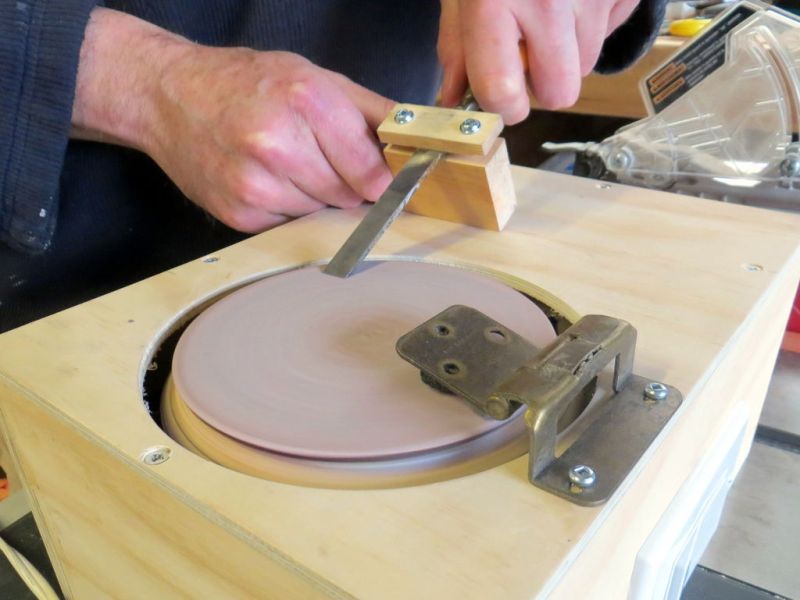Poor [makendo] had seven broken bread makers lying around, all with failed paddle drivers. Since they also all have big motors and other useful parts in them, he decided to turn one of them into a powered tool-sharpening turntable.
First, [makendo] salvaged the motor, the gear, and the thick circular glass window from one of the bread makers. He cut a platter from plywood the size of the glass window, chamfering the edge to fit the gear. Next, he built a housing from scrap plywood, separating the motor from the platter with a crosspiece to keep the motor free from dust. A large magnet on a hinge collects metal powder from the system quite effectively. The sharpener spins at about 200RPM: fast enough to do the job and slow enough not to get hot.
According to [makendo], the sharpener restores bevels nicely but doesn’t make edges”scary sharp”. To that end, he used a toaster oven door as a base for a series of micro-abrasive grits of sandpaper as a finishing rig. In order to sharpen his chisels uniformly, he made a jig to hold them firmly in place against either the powered turntable or the fine sandpapers.
[Thanks for the tip, Scott]
















For those unfamiliar with the term Scary Sharp [TM] is used by woodworkers to describe various ways of getting a mirror like sharp edge to their cutting tools (plane blades, chisels, etc.)
Great idea, it’s impossible to hold a blade at a consistent angle.
You will always end up with a cabochon instead of a facet.
I need this, wet would be best.
Generations of wood workers, metal workers, stone masons, and barbers managed to get along fine without jigs. Sharpening freehand is a skill worth developing.
Most of the time if you stick to a fine grit and follow the factory edge it’ll be hard to mess up the edge profile w/o noticing you’re off angle. Also to your benefit, unless you’re chasing the absolute bleeding edge of blade angle and steel combination holding a consistent angle is more important than holding a specifc angle.
After doing this so many times the flat side will become curved. The bite will be harder to control. Eventually it needs a resurfacing to flat. Nothing like a surface grinder for flatness, however this comes close for cheap. I will save the freehand for what I do with those good tools well sharpened.
Irish music with out jigs, no way. Have a great St. Patrick’s day.
Which flat side?
The bevel (cutting edge) or the back of the chisel?
Every chisel needs the back surface lapped to ensure a straight edge. It should be the first thing you do after opening the package.
If the corners are getting rounded, pressure isn’t getting distributed evenly across the cutting edge either due to user error or dishing in the whetstone. If you mean the bevel is changing from a wedge to a sheeps foot shape, that means the chisel is not being sharpened at a consistent angle. Double grinds can be as effective as flat grinds but it sounds like your chisel isn’t ground so much as blunted.
this just makes me think of my old house mate, the time I spent sharpening kitchen knifes and the amount of times I watched him take a knife and a steel out of the draw and wanted to shout, “no, you’re just making it round!”
Sometimes a jig it nice. -whilst you think that your results are good without a jig, you know that they are good (are repeatable) with a jig.